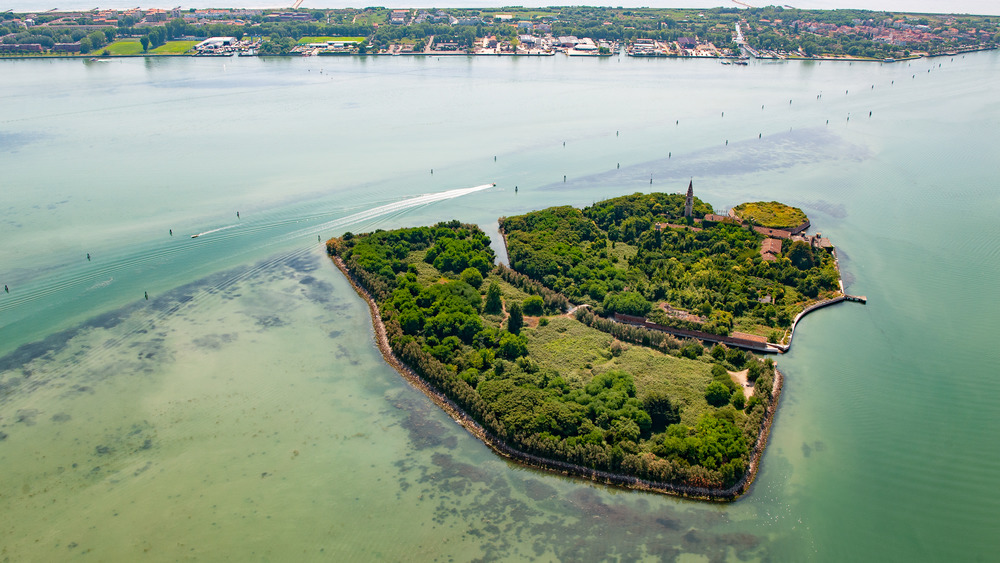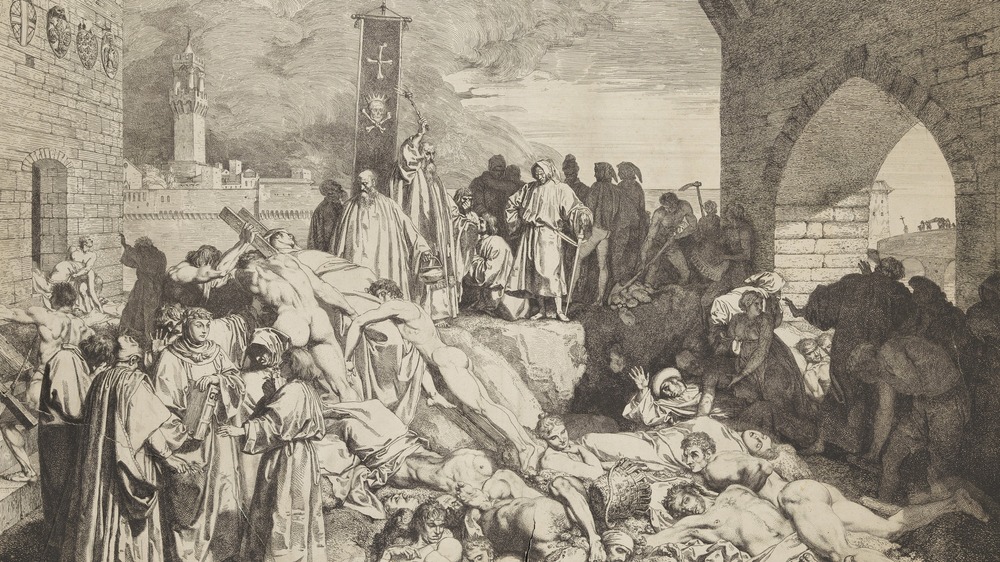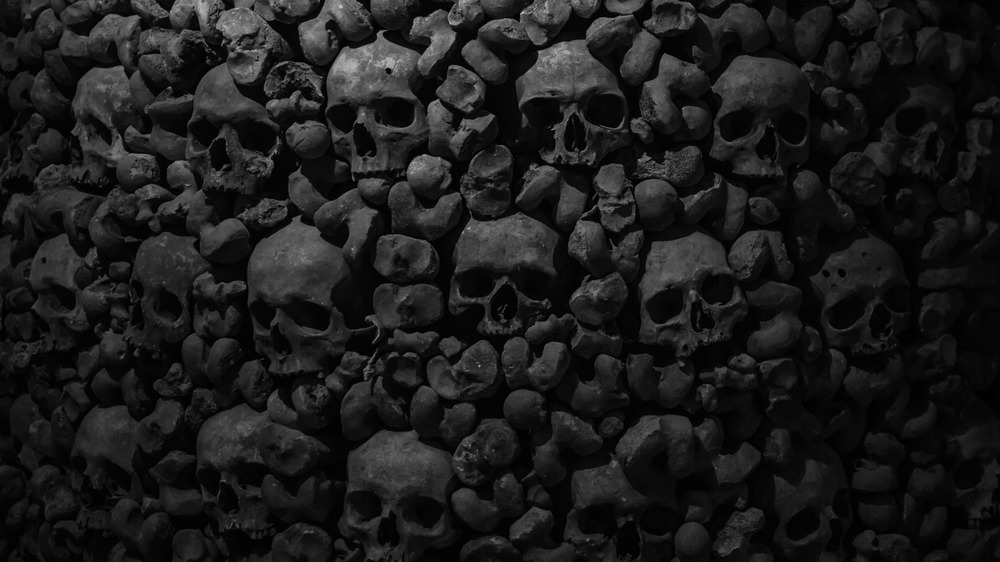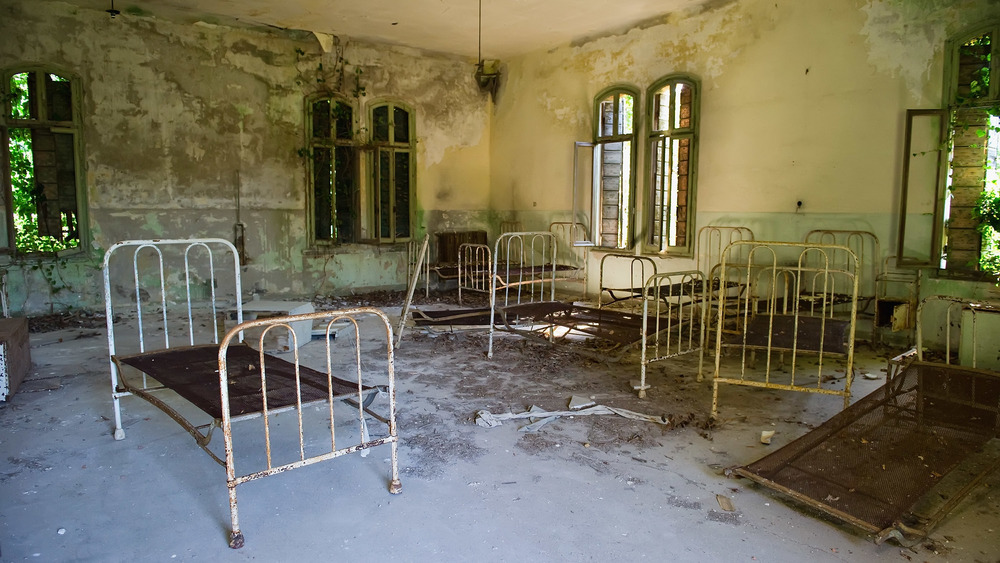A Look At Italy's Island Of The Plague
A haunted island of the damned off the Venetian coast where mental patients and plague victims were once sent, complete with soil composed of human remains? Sign us up! Holy water and other defensive weaponry not included.
Well, at least sign us up in 2113, when leasing rights to the island expire, and it opens to the public again. (Or try to be one of the few urban explorers brave enough to charter a boat to venture there, as seen on YouTube). Because Poveglia, the quaint nightmare island in question, was sold to an Italian businessman in 2014 for $704,000 on a 99-year lease, per Business Insider. He plans to fix up the place, he says (you know — banish the ghosts, hire a few exorcists, de-evil the unsanctified grounds), and make it ready for public use again. But would members of the general public even want to go to Poveglia, knowing its history? As nearby residents of Venice or Lido would resoundedly reply: "no."
Reason being, Poveglia's past is so twisted, so uncannily horrific, stacked upon itself century after century like the bodies of the island's own mass graves, that it seems absurd exactly how much suffering can be condensed into one, tiny, 18-acre (0.028 square miles) island, as The Sun relates. Poveglia, called "the world's most haunted island," or the "Island of Ghosts," has a grim-enough history, particularly related to plagues and quarantines, to cast our current COVID-19 situation in a strangely innocuous light.
A place of refuge turned dumping ground for the diseased
The story of Poveglia begins (joke incoming), as many macabre tales do, with cats. Well, actually, a lack of cats, which caused the Black Death to swiftly spread throughout Europe. The Black Death, or "Bubonic Plague" (named after painful, fluid-filled sores on the bodies of victims called "bubo"), took only seven years, from 1346 to 1353, to annihilate 50 million people, or 60 percent of the European population, per History Today. Pope Gregory IX had thought the devil was a half-cat creature, and issued Vox in Rama to cull the cat population. When the Black Death arrived in Europe hitchhiking on rats traveling on ships traveling to major ports such as Venice, the rats went rampant and the Black Death unchecked.
Up until then, as the Travel Channel recounts, tiny Poveglia was not only plague-free, but a refuge for citizens escaping barbarians making their way through the mainland, and had been inhabited since 421 CE. It was a peaceful, out-of-the-way place whose inhabitants — Povegliotti, per Luxe Adventure Traveler — more or less avoided the troubles of the mainland until those troubles invariably found them. They were forced to evacuate their haven during the War of Chioggia, outlined on Boglewood, and Poveglia was left ravaged and unlivable; its fortress-like walls had proved unsuccessful at impeding invaders.
Then empty, from that point on, Poveglia became a dumping ground for the diseased, the exiled, the mad, and it seems, all of their spirits.
Burned alive en masse during the Black Death
When the Black Death hit in the 14th century, people might not have been savvy on the ins and outs of epidemiology, but they at least recognized that it was a good practice to separate the healthy from the sick. Venetian authorities, though, went one step further. They declared Poveglia to be a plague quarantine station, or "lazaretto" — one of a number in the region, per Atlas Obscura — and shipped (literally) the sick off to Poveglia in droves to die.
As Huff Post explains, the diseased lived out their final days in agony, without care or means of comfort, clustered together on the tiny island. That is, if they made it that long. Many were simply packed onto giant pyres of existing human remains at the island's center and burned to death. People went kicking and screaming, fighting their island-bound death sentence. Even those merely suspected of being ill were carted away and burned. In the end, it's estimated that about 160,000 people died on Poveglia in those times — a staggering 500 people a day — and that over 50 percent of the soil is composed of human ash, as cited by Escape. To this day, mass graves are being discovered on not only Poveglia but other nearby quarantine islands.
Poveglia's fate as a destination of the damned didn't end there, though. Hundreds of years later, Napolean used it to store weapons, and battles raged on its surface to claim the weaponry.
An asylum of torture for the mentally ill
The final chapter of Poveglia's history centers on the nearly prosaic horror trope of a mental asylum full of torturous human experiments. Even without all the incinerated plague victims and mass graves, it's enough to warrant a fear of the island.
In the late 1800s, a sanitorium was built on Poveglia that served as a den for the exiled, those deemed too mentally ill for society; the words "Reparto Psichiatria" can still be read across the asylum's main structure, as Lux Adventurer Traveler says. Patients and employees claimed to hear the shrieks of the dead, and see specters roaming around. In 1922, a doctor took over the facilities, who specialized in lobotomies. He used a crude "hand-drill" method, which, as you can guess, involves crunching a hole through the skull and into the brain (lobotomies usually went up the nose with an ice pick). Rumor is that the island's 12th century bell tower was reserved for even more torturous procedures. In the 1930s, the doctor threw himself from that very bell tower, claiming to be driven mad by the deceased.
In the mid-20th century, the asylum was converted into an elderly care facility, but more or less looked exactly the same. That facility was shut down in 1975. Construction crews have attempted to restore the island over the intervening decades, but have given up and fled. Now, locals consider Poveglia a cursed place to be avoided at all costs.



